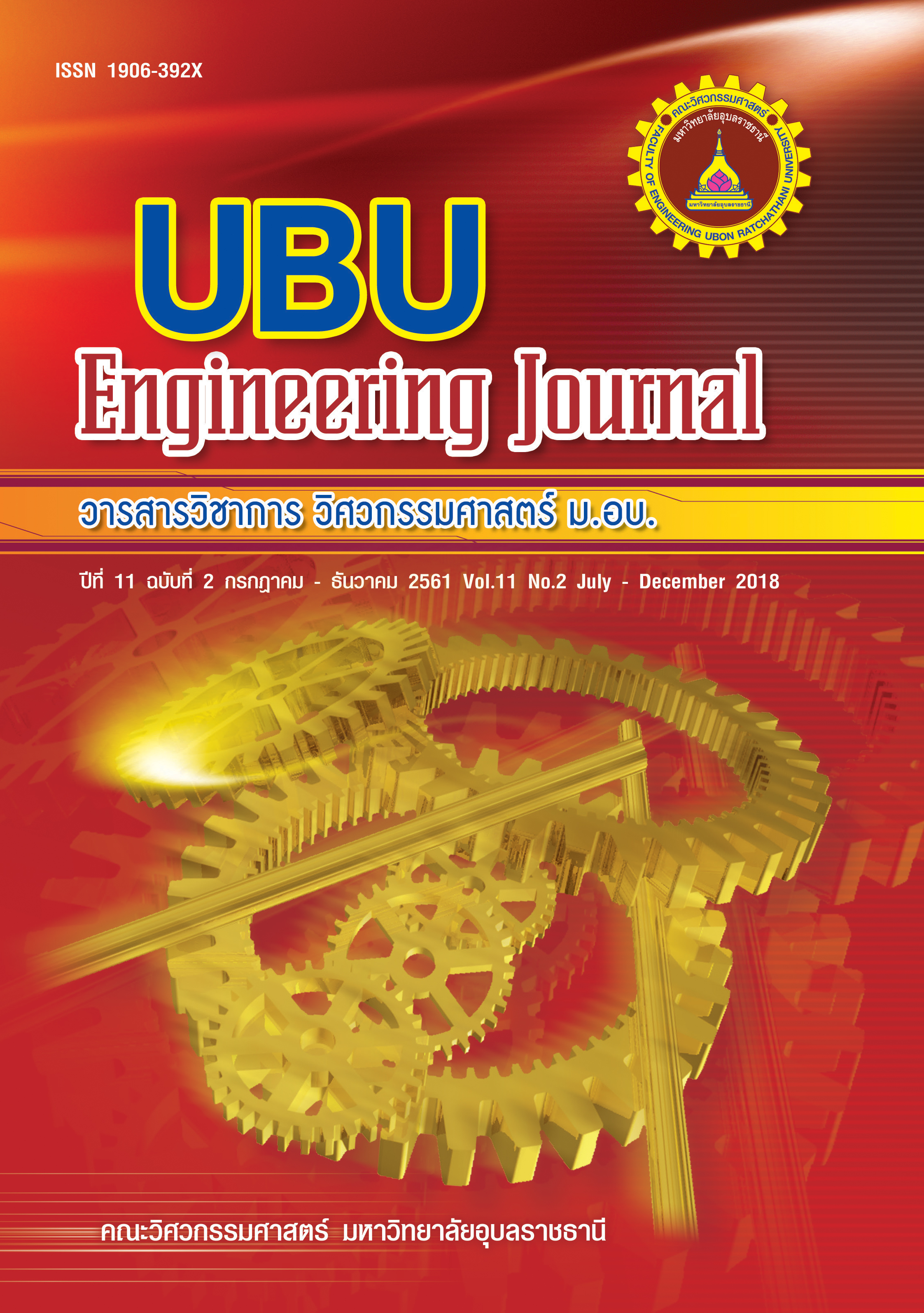กำลังอัดและโครงสร้างจุลภาคของดินลูกรัง-กากกาแฟปรับปรุงด้วยเถ้าลอยจีโอโพลีเมอร์
Main Article Content
Abstract
This article investigated compressive strength and microstructure of lateritic soil-used coffee grounds stabilized fly ash geopolymer. Fly ash (FA) was obtained from the Mae Moh power plant, Lampang Province. Used coffee grounds (CG) was collected from the coffee shop in Nakhon Ratchasima area. Liquid alkaline activator was mixed of sodium silicate (Na2SiO3) and sodium hydroxide (NaOH). The Na2SiO3:NaOH ratio was 50:50. The concentration of NaOH was 5 molar. The compressive strength of samples at curing time of 7 days was examined. Test results show that the unit weight of lateritic soil-CG FA geopolymer decreases with increasing the CG. The maximum unit weight of sample is 20.12, 19.75, 18.96 and 18.05 kN/m3 for CG content of 0, 10, 20 and 30% by weight, respectively. The decrease in unit weight causes high porosity in particles of CG. The lateritic soil-CG FA geopolymer at curing time of 7 days and optimal water content gives the maximum compressive strength which is 2.57, 1.82, 1.40 and 0.88 MPa for GC content of 0, 10, 20 and 30%, respectively.
Article Details
References
energy. J. Agric. Food Chem. 2008; 56: 11757– 11760.
[2] Boonamnuayvitaya V, Chaiya C, Tanthapanichakoon W, Jarudilokkul S. Removal of heavy metals by adsorbent prepared from pyrolyzed coffee residues and clay. Separation and Purification Technology. 2004; 35: 11–22.
[3] Suksiripattanapong C, Horpibulsuk S, Chanprasert P. Sukmak P, Arulrajah A. Compressive strength development in fly ash geopolymer masonsy units manufactured from water treatment sludge. Construction and Building Materials. 2015; 82: 20–30.
[4] Horpibulsuk S, Suksiripattanapong C, Samingthong W, Chinkulkijniwat A, Rachan R, Arulrajah A. Durability against wet-dry cycles of water treatment sludge–fly ash geopolymer. Journal of Materials in Civil Engineering. 2015; 94: 807–816.
[5] Suksiripattanapong C, Horpibulsuk S, Boongrasan S. Udomchai A, Chinkulkijniwat A, Arulrajah A. Unit weight, strength and microstructure of a water treatment sludge–fly ash lightweight cellular geopolymer. Construction and Building Materials. 2015; 58: 254–257. [6] Suksiripattanapong C, Srijumpa S, Horpibulsuk S, Sukmak P, Arulrajah A, Du JY. Compressive strength of water treatment sludge–fly ash geopolymer at various compression energies. Lowland Technology International Journal. 2015; 17(2).
[7] Sukmak P, Horpibulsuk S, Shen SL. Strength development in clay–fly ash geopolymer. Construction and Building Materials. 2013; 40: 566–574.
[8] Sukmak P, Horpibulsuk S, Shen SL, Chindaprasirt P, Suksiripattanpong C. Factors influencing strength development in clay-fly ash geopolymer. Construction and Building Materials. 2013; 47: 1125–1135.
[9] Kua TA, Arulrajah A, Horpibulsuk S, Shen SL, Du YJ. Strength assessment of spent coffee groundsgeopolymer cement utilizing slag and fly ash precursors. Construction and Building Materials. 2016; 115: 565–575.
[10] Kua TA, Arulrajah A, Horpibulsuk S, Du YJ, Suksiripattanapong C. Engineering and environmental evaluation of spent coffee grounds stabilized with industrial by-products as a road subgrade material. Clean technologies and environmental policy. 2017; 19: 63–75.

